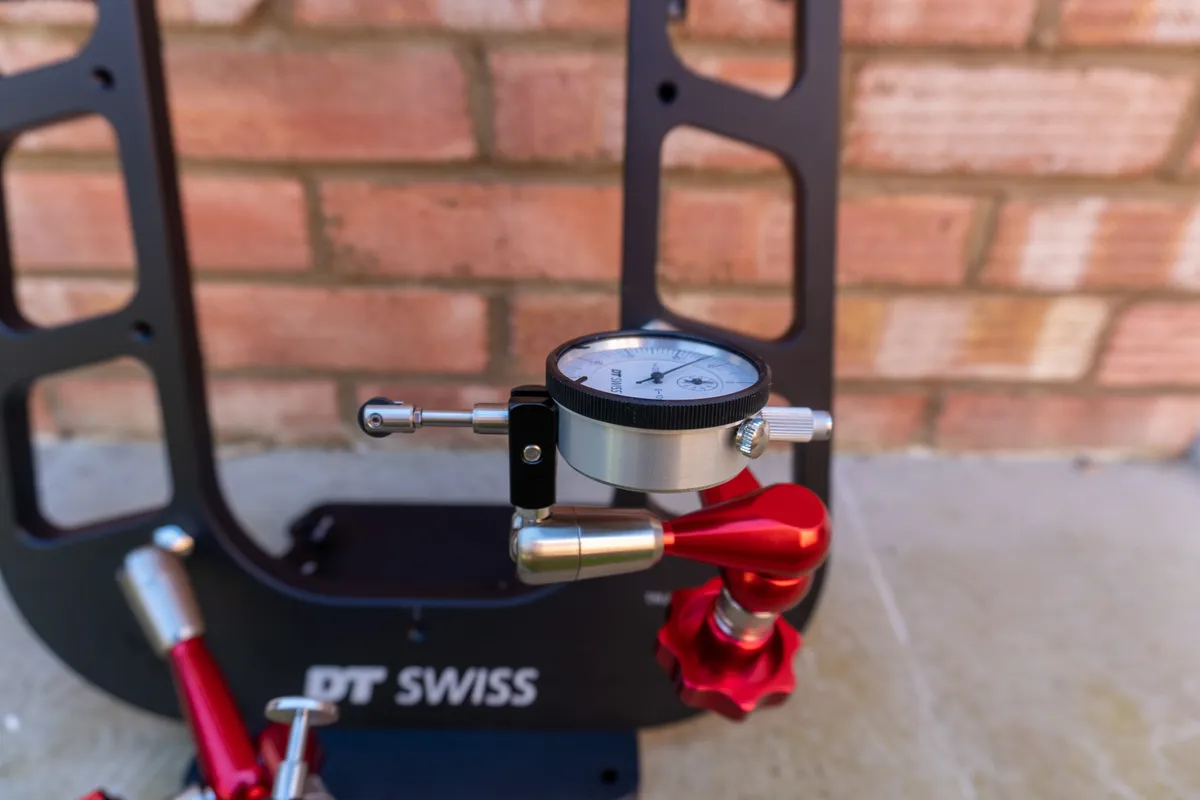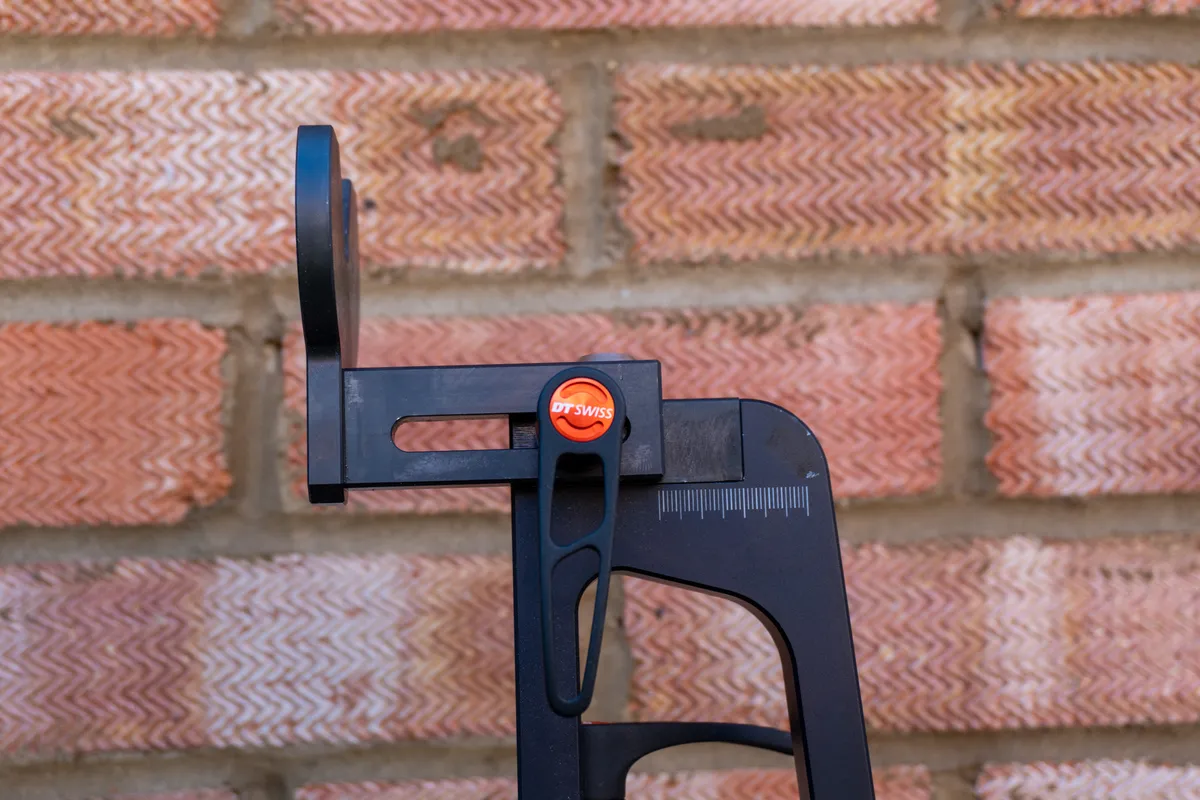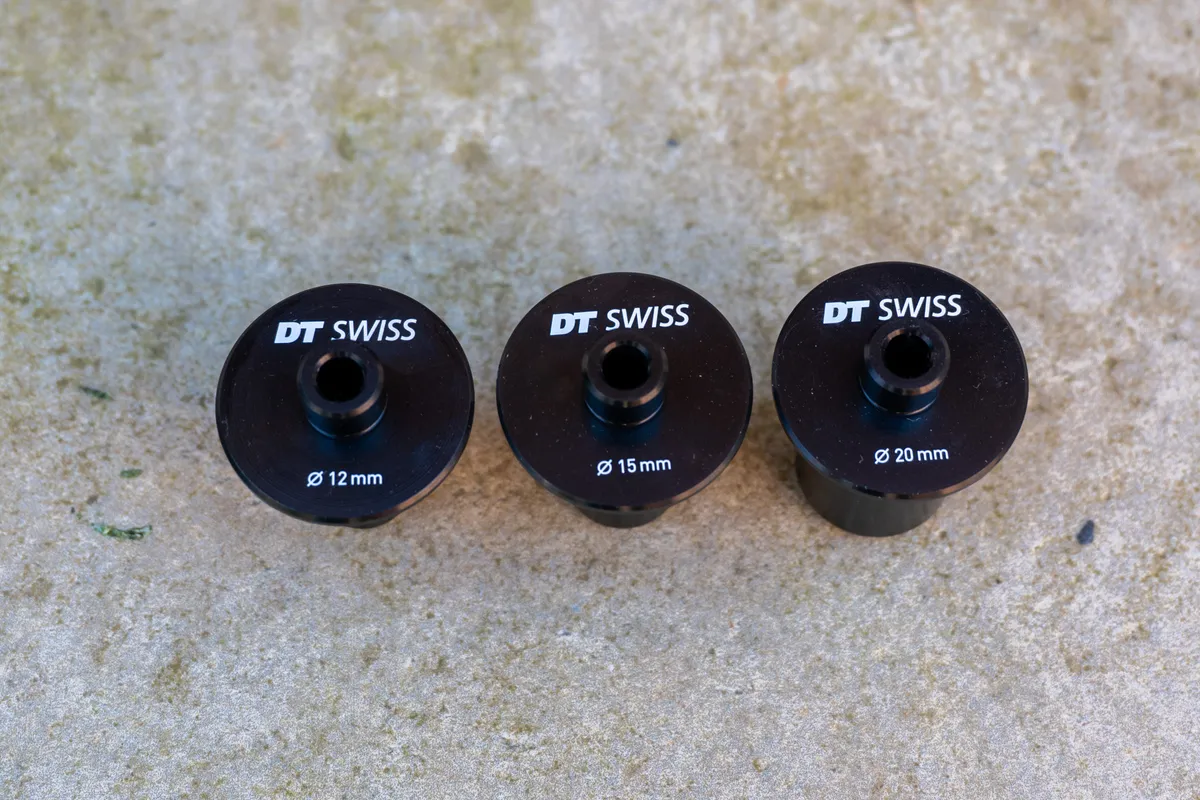DT Swiss has announced the release of its new simply named Wheel Truing Stand, a flagship stand the brand says it uses to build and true customer wheels.
The stand makes clever use of DT Swiss' signature RWS skewers to hold the wheel in place on the stand and to adjust the stand uprights.
The stand’s frame cuts a similar silhouette to its predecessor and uses two beautifully crafted multi-link arms with dial indicators to get your wheel true both laterally and radially. The dial indicators features unit markings in 0.01mm increments.
There’s a discreet centre line mark printed at the base of the uprights to assist with correct wheel dishing (how central the rim is over the hub), although DT Swiss recommends using a specific wheel dishing tool for best results.
Out of the box, you get a choice of attaching the stand to a base plate or a vice plate.
To the rear of the stand are two RWS skewers, one front- and one rear-wheel specific, secured in place with plastic holders.
Three adaptors sit in machined slots at the back of the stand’s base plate to ensure compatibility with 12, 15 and 20mm hubs.
Although it should be common sense, DT Swiss says not to use the included RWS axles on a bike.

DT Swiss says it will also be bringing out an attachment to true a disc brake rotor.
You’ll need deep pockets for the stand because it costs £1,149.99/$1,638.90/€1,259.90/AU$2,249.
DT Swiss Wheel Truing Stand impressions

I've wasted no time putting the stand to the test by building DT Swiss’ new 350 hubs onto its RR421 road rims.
I've also used the stand to check the build quality of a set of FFWD RYOT 33s that are in for review.
The stand feels reassuringly sturdy, despite its low 9.3kg weight. For reference, Park Tool’s TS-4.2 weighs a claimed 16kg.
Putting the stand together is straightforward. Once you’ve mounted the stand to the base or vice plate, simply fit the plastic holders that host the RWS skewers and attach the multi-link arms. DT Swiss recommends tightening the nut on the multi-link arm to 15Nm.

You can choose where you mount the multi-link arms, but I opted to mount the radial runout at the bottom-left and the lateral indicator at the bottom-right.
Installing a wheel is slightly more involved than other stands. You need to install the relevant truing adaptor onto the end cap of the wheel and then attach it using the RWS axle.
You need to make sure they're fully tightened because any play at the hub will amplify on the stand when it comes to truing.
On other stands, such as Park’s TS-4.2, the uprights feature an integrated thru-axle holder, forgoing the need for any adaptors.

The dial indicator gauges are phenomenal and adjustments can be made to a satisfyingly tight tolerance.
You simply set the tolerance marks to the minimum and maximum points the dial shows at, and work from there.
The anodised red multi-link arms have a stunning appearance and adjusting their position is a step to relish. Simply turn the ergonomic dial and in less than half a turn, the whole of the arm flops, so you can adjust its position and angle with ease.

Although the centre mark gives a rough indication of whether you’ve achieved the correct dish, it’s not as simple as being able to rely on the caliper arms. This is why a specific wheel dishing tool is the best option for perfect results.
However, the benefit of this design is that unlike other stands, the DT Swiss version won’t require calibration.
Other stands require the uprights to be centred perfectly to give an accurate representation of wheel dishing, often via the use of a calibrating gauge. This is an additional expense and means you’re best storing a truing stand in a specific place to avoid it getting knocked.
Although DT Swiss’ Wheel Truing Stand is very expensive, it would be an excellent option for workshops, or if you’re regularly building or truing wheels.




